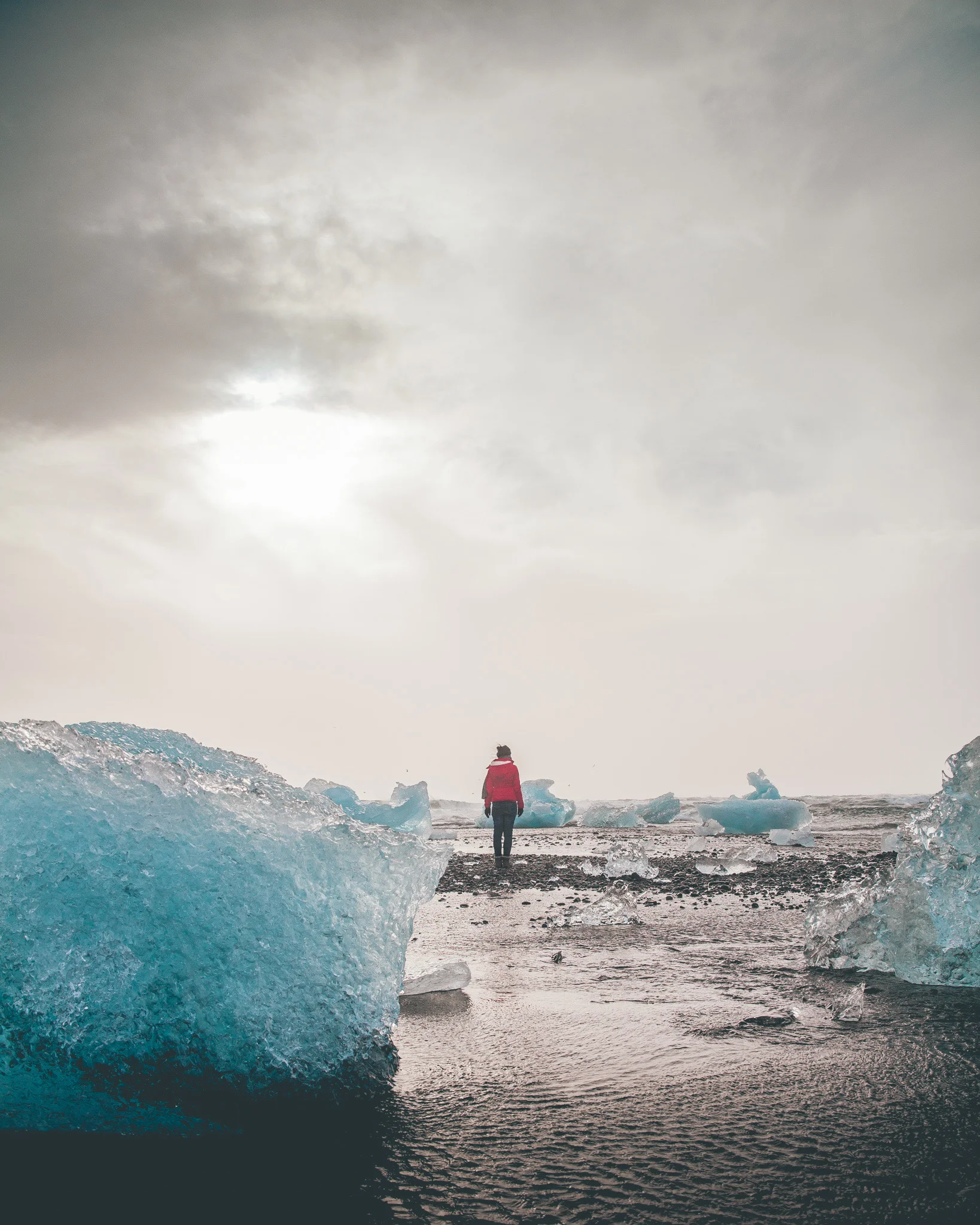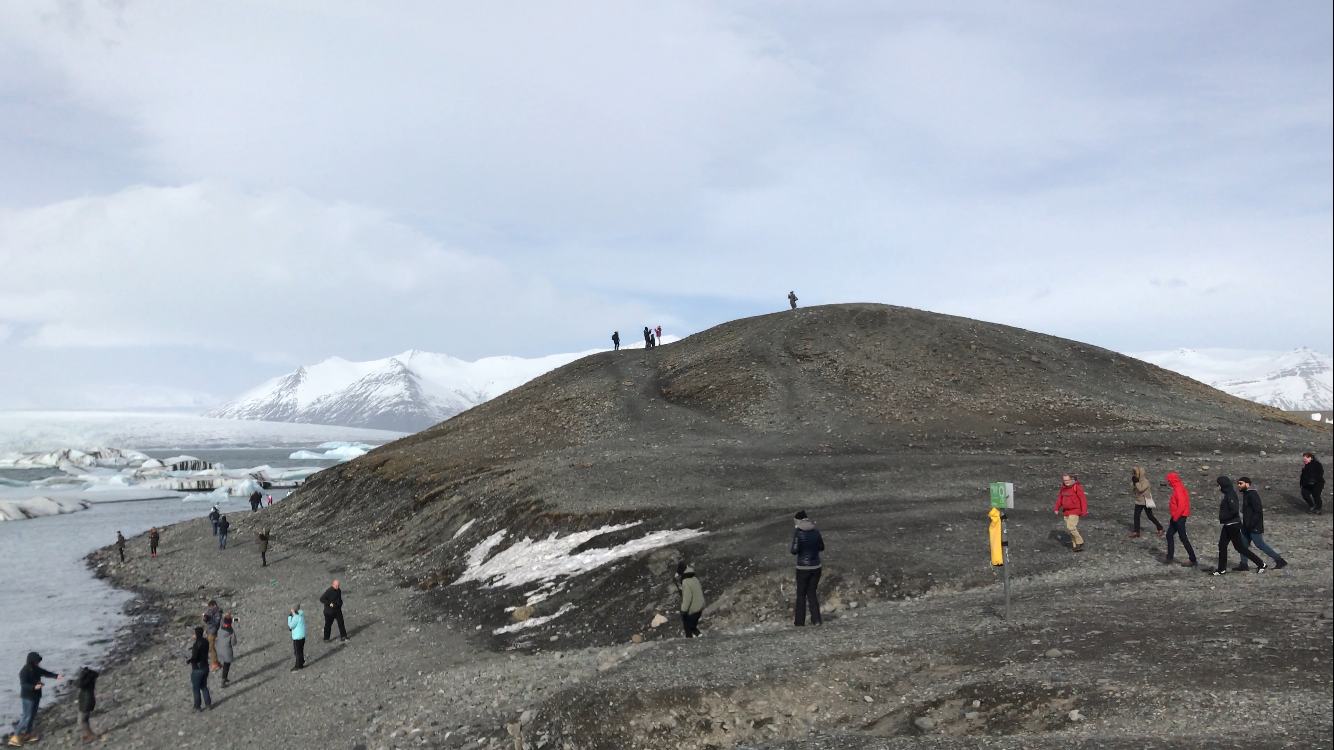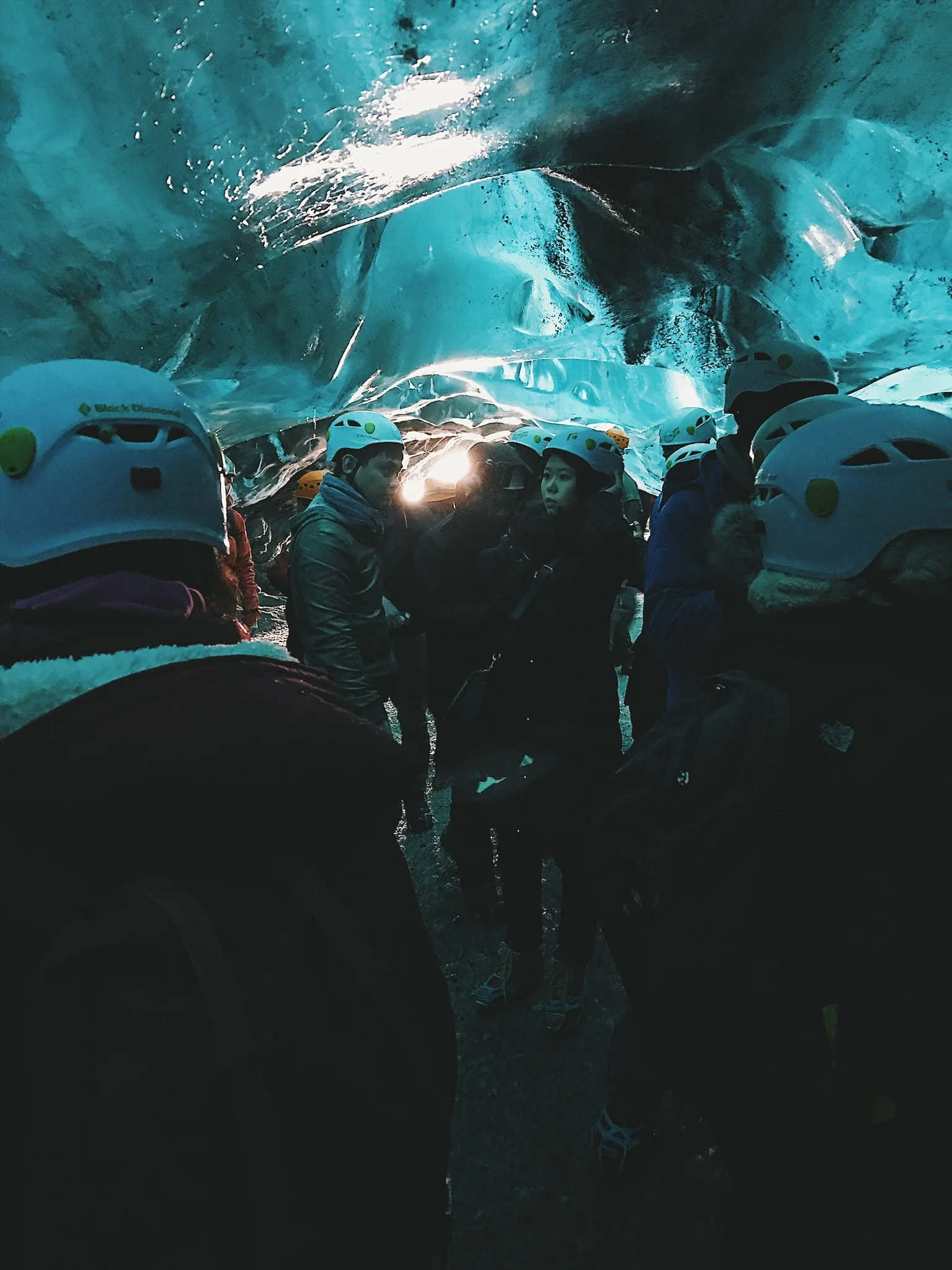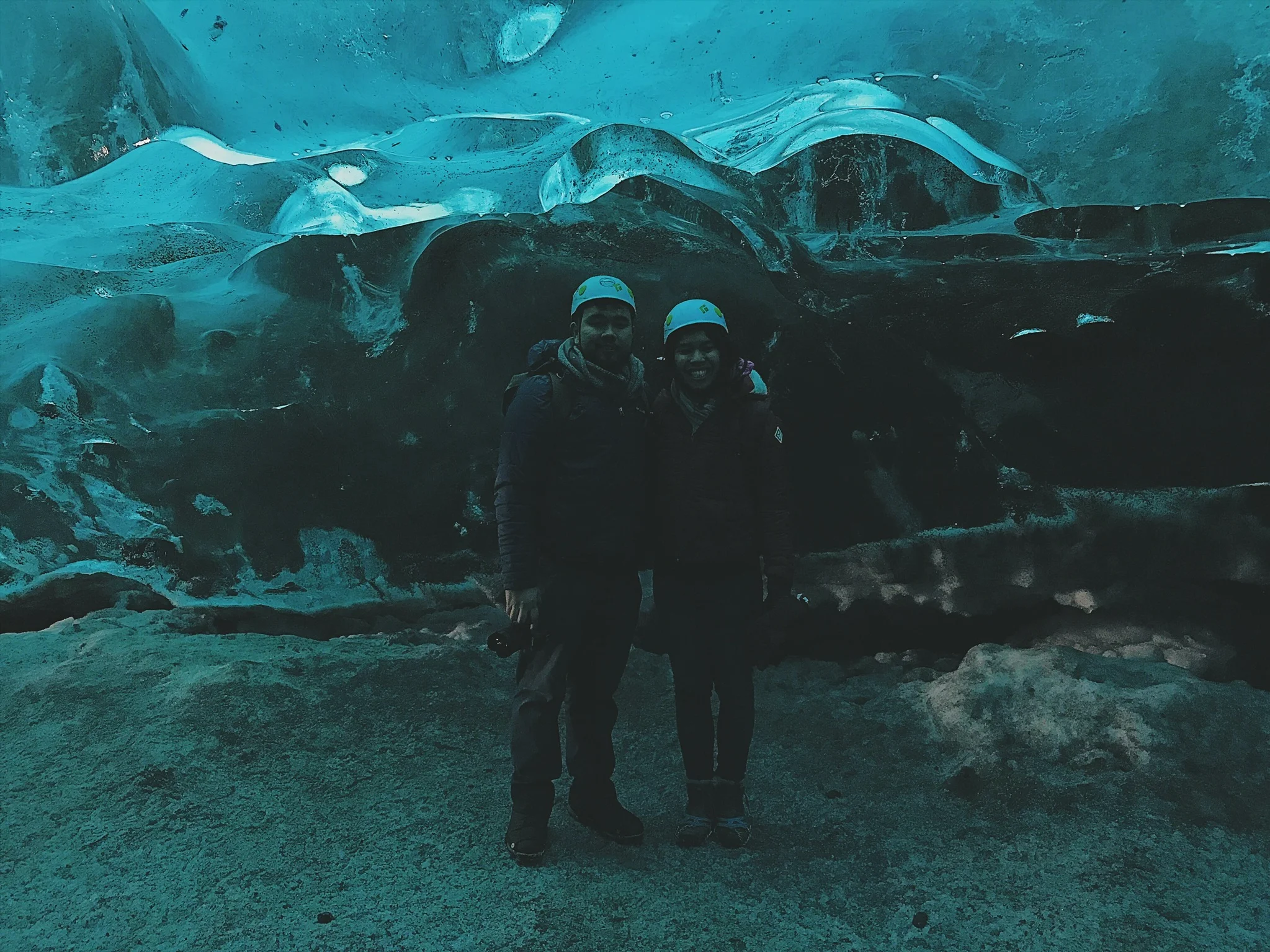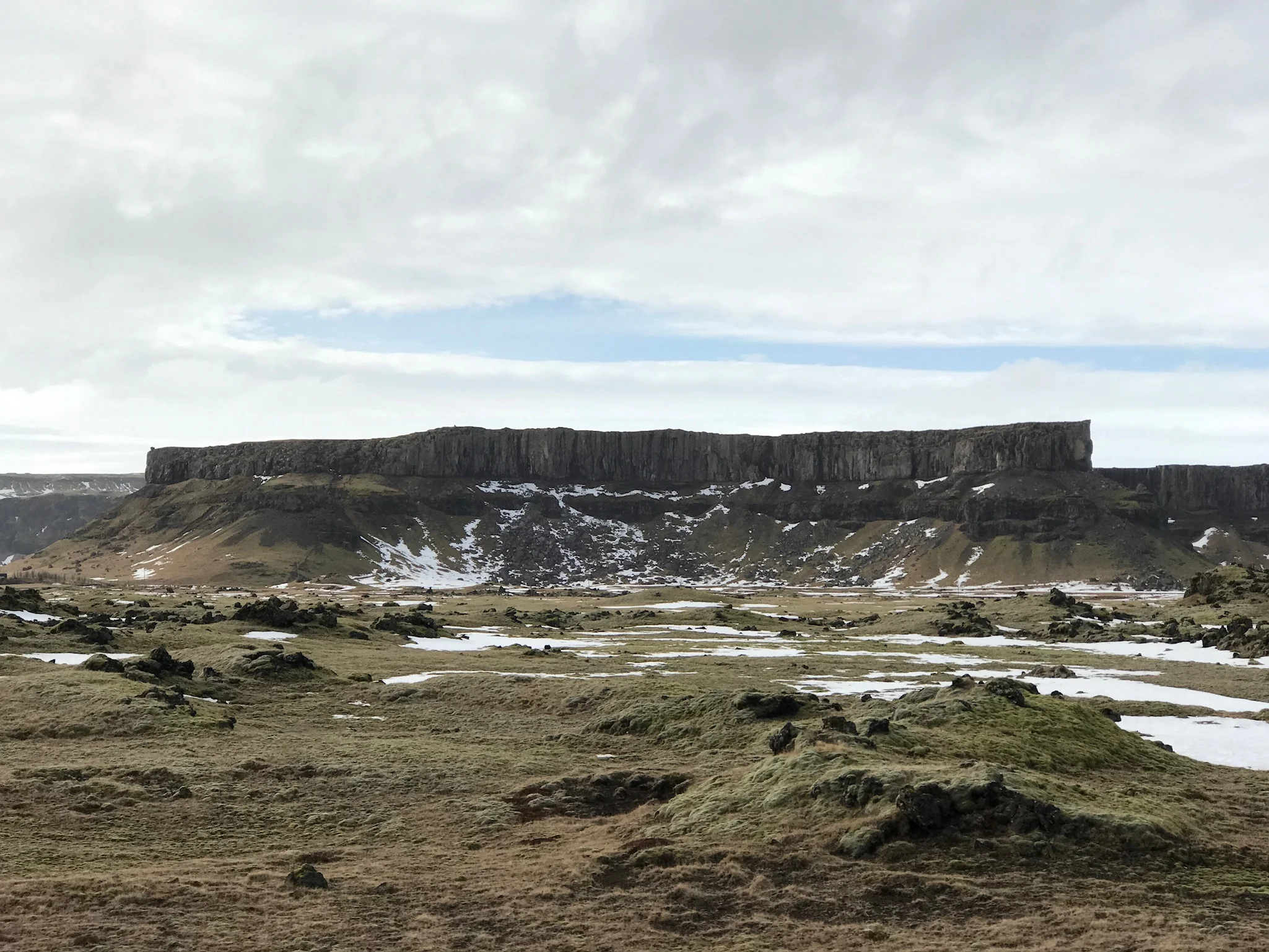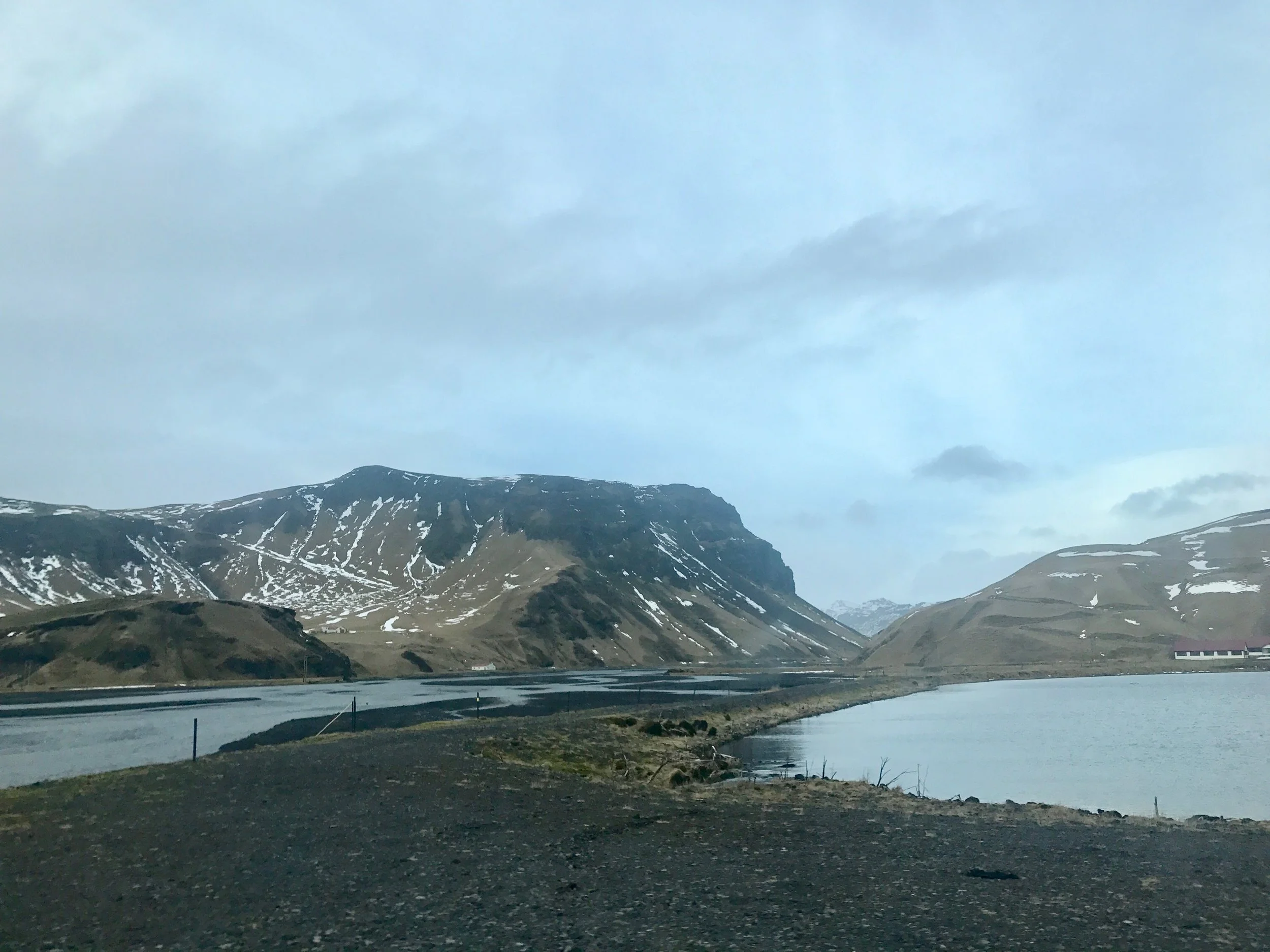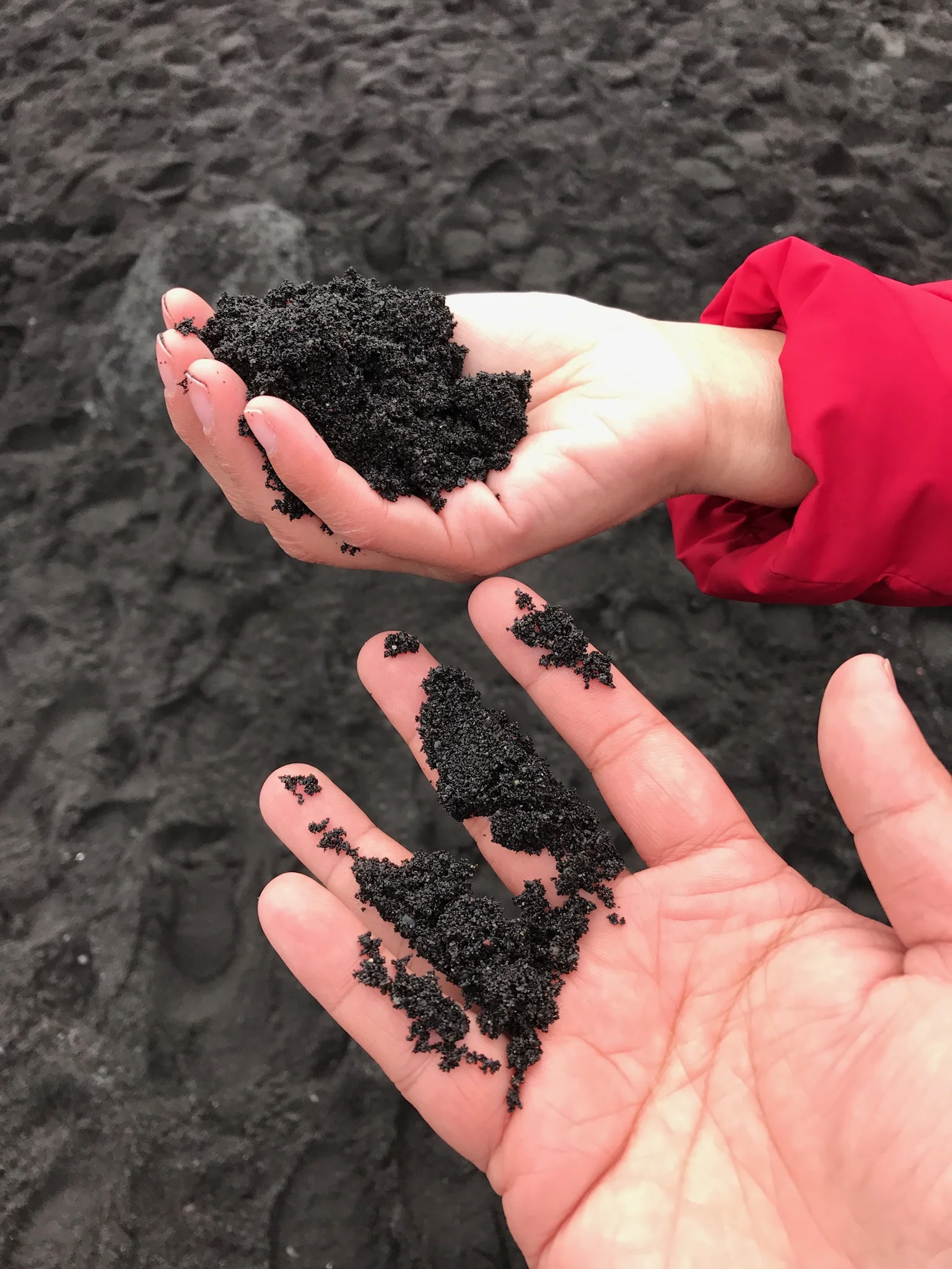Activities from Höfn to Vík during the Winter
We left Höfn in the morning, and that town is nice! I think it really was the first day we were seeing what Iceland looks like without all the layers of snow. We left in the early morning to go hike some glaciers!
Diamond Beach
Since we were early, and our tour took place at Jökulsárlón... We headed towards the neighboring beach. We later learned the name of it is Diamond Beach because of all the glacier pieces sitting on its shore.
We took some pictures around and checked out the large chunks of ice.
It was at this beach we saw another one of our Airbnb neighbors. Tam was catching up with him, and we learned what happens to someone who gets stuck somewhere IMPASSABLE.
He and his friends took the Road 1 where we had turned around the day before. They got stuck in the snow, and paid €450 (almost $500 USD). So really good thing we didn't chance driving through snow!
Jökulsárlón + Vatnajökull
We crossed the beach back to Jökulsárlón cafe and waited to start our tour. Lots of people were walking around the area to take pictures, which is nice. It was interesting to see a lot of young people here, many of them college aged... And tons of Chinese tourists! So much so, that there are signs in Chinese. I often worry about the reverence for nature that people have. Some parts of the grass were dying away because of the repeated footsteps, pushing it into the ground.
We booked our tour through Glacier Guides. They take you in a shuttle from the cafe to another, all terrain vehicle. The vehicle then drives you across the glaciers to the base of the glacier and to the cave!
Vatnajökull is one of the largest glaciers in Iceland, and covers most of the southern part of the country. It's melting a bit each year. You know, growing up, I knew that glaciers formed the landscape of mountains but I didn't really understand what that meant. Maybe I wasn't a particularly bright kid, but explaining "sheets of ice melt and create mountains/canyons" doesn't tell me how. Anyway... What happens is that as the ice melts, the water finds tiny crevices that it runs through as it melts. The longer this occurs, the more likely this water is taking out pebbles, then chunks of rocks as it goes down. The crevices turn into crevasses and then we get things like canyons and other cool natural things.
Ice Cave
Anyway, same idea, except with the Ice Cave! There are parts of the ice that aren't as strong as others, so when it melts... That part breaks down. The ice cave is a result of ice having frozen, then melting in certain ways... Creating this cavern. There were tons of tiny spouts of water dripping from the ceiling, so I knew that they probably would have to close the cave in the next week for safety.
In case you were wondering, the Ice Caves are blue because of light. Blue light has stronger wavelengths than magenta and yellow wavelengths, and therefore can penetrate and influence the color of the ice cave better... That's why they're blue! Also, that's why the ocean is bluer the deeper you go... Just in case you didn't know. Tam's pictures of this place were much better than mine, so here you go.
The water in the cave is also very refreshing! It doesn't have much of a taste, but it sure is freaking cold! I wish the water in my faucet was as cold as the water in Icelandic faucets. Unfortunately, glaciers aren't likely to survive tropical weather.
Anyway, we finished the tour, had a snack, and hit the road again!
Drive On
Cities in the south tend to be closer together. The south has better weather and is more hospitable for sheep farming, a trade that's been in Iceland since people settled here. There isn't a lot of plant farming, since Icelandic weather made it extremely difficult to farm grains. Historically, most of the imports to Iceland was grain... And they exported fish. Lots of it. In fact, Iceland sourced a lot of the fish that circulated Europe when eating fish on Fridays for Lent became a thing.
I also really love that there are waterfalls in people's backyards. LITERALLY. It's really cool to see the direct relationship between people and nature... And especially seeing how people use, or don't use, the resources around them.
We also saw the glacier along parts of the drive. It's massive.
Vík + Reynisfjara
We headed down to Vík to load gas, get more hot dogs, and check out this popular coastal town. Most people head to Vík because of its black sand beach. We of course, did that.
The sand at Reynisfjara beach is really fine. Similar to Kailua Beach sand. The water isn't nearly as pleasant. The combination of the sand and the clouds made the water look grey, very much like the Death Cell in Fantastic Beasts and Where to Find Them. It was a little terrifying, considering I'm used to my water being very, very, blue.
This beach is also popular because of the basalt column cave. Basalt columns aren't unique to Iceland; they generally occur in places that have volcanic activity. There are a few in Micronesia, but Giant's Causeway is another popular spot to see them. Oh, and in case you're wondering, they're featured in Moana, when she's climbing the mountain with Maui to enter the demon world.
It was here that my shoes got wet from the water... So I was a little bit salty. Haha. Literally, and figuratively.
Dyrholáey
15 minutes away from Vík is a look out called Dyrholáey. I'm guessing you can see a lot of birds from the lookout based on the signs from the top rock formation. This place is known for the arch with the hole in the middle. I don't have any pictures of it, but I'm sure you can look it up. We flew Tam's drone for a little bit, so be on the look out for our video!
Eyjafjallajökull
Our next Airbnb was next to this volcano and glacier. Well not really, but it was in the neighborhood. The name may look familiar if you've seen The Secret Life of Walter Mitty. We stayed on a cow farm and met some cool people at this Airbnb.
One woman we met is an investment banker from Boston, and this other person was an amateur photographer from Australia. Anyway, we rested this evening, and watched as the clouds slowly set on the farmland around us.




